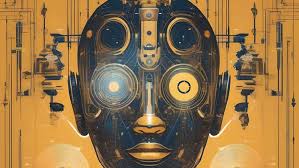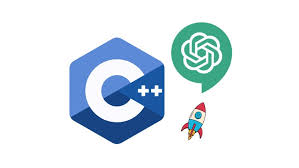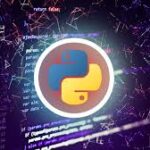First step towards Data Science
SUMMERY
In this comprehensive course, you’ll embark on a journey to learn Python from scratch through hands-on coding exercises. With a total length of 4 hours and 36 minutes, the course is divided into 24 lectures spread across two sections, designed to offer practical experience and fundamental knowledge of Python programming.
Course Overview:
- Introduction to Python: Python is a high-level, versatile programming language known for its simplicity and readability. Developed by Guido van Rossum and released in 1991, Python is open-source, meaning its source code is accessible for modification and distribution. It is widely used in various domains such as web development, game creation, machine learning, and data science.
- Python’s Working Mechanism: Python is an interpreted language, which means it runs directly from the source code without requiring compilation. The Python Interpreter converts the code into Intermediate Bytecode, which is then translated into machine language for execution. This process ensures that Python code is executed efficiently and produces the desired output.
- Understanding Programs: A program is a sequence of instructions that directs a computer to perform specific tasks. Python, as a programming language, is used to create such programs. For example, when you click the play button on a media player, a program is executed to start playing music. Python also supports built-in functions like
print()and uses comments to make code more understandable.
Course Content:
- Variables: Variables are used to store values that can be referenced and manipulated in a program. Examples include
a = 2,b = 1.2,c = 'Ram', andd = lambda ('any function'). Understanding variables is crucial as they are foundational elements in programming. - Datatypes in Python:
- Integer (
int): Whole numbers. - Float: Decimal numbers.
- String (
str): A sequence of characters, e.g.,"Hello". - List: An ordered, mutable collection of items, e.g.,
A = [1, 2, 3.4, 'a']. - Tuple: An ordered, immutable collection of items, e.g.,
B = (1, 2, 3.4, 'a'). - Set: An unordered collection of unique items, e.g.,
C = {1, 2, 3.4, 'a'}. - Dictionary: An unordered collection of key-value pairs, e.g.,
D = {1: 'a', 2: 'b'}.
- Integer (
- String Operations: Strings can be concatenated using the
+operator, and special characters like\ncan be used to create new lines in output. - List Functions: Lists in Python come with various built-in functions. For instance, using the ‘Tab’ button in an IDE like Jupyter Notebook or PyCharm reveals available functions for a list object, which can be helpful for managing and manipulating list data.
- Functions and Methods:
- Range: Generates a sequence of numbers.
- Input: Captures user input.
- Map: Applies a function to all items in an iterable.
- Filter: Filters items in an iterable based on a condition.
- Split: Splits a string into a list based on a delimiter.
- Enumerate: Adds a counter to an iterable.
- Zip: Combines two or more iterables element-wise.
- Unzip: Separates a zipped iterable into individual components.
- Def: Defines a new function.
- Lambda: Creates anonymous functions.
- Loops:
- For Loop: Iterates over a sequence (like a list or range).
- While Loop: Repeats as long as a condition is true.
- Indexing, Slicing, and Casting:
- Indexing: Accesses individual elements in a sequence.
- Slicing: Retrieves a subset of a sequence.
- Casting: Converts data from one type to another.
Practical Application:
The course emphasizes practical experience through real-time coding exercises in Jupyter Notebook. This setup allows you to immediately apply concepts learned and gain hands-on experience. You’ll have access to download lecture videos and source code files for reference and further practice.
Requirements:
No prior programming experience is required. The course is designed to take you from beginner to a level of confidence in Python programming. You can use various development environments such as Jupyter Notebook, PyCharm, or Google Colab to follow along with the course material.
By the end of this course, you will have a solid foundation in Python programming, equipped with the skills to write, debug, and execute Python code effectively.
What you’ll learn
Python Programming Language from Scratch
Gaining practical experience with real-time exercises
Python Datatypes – List, Tuple, Set, Dictionary
Understanding the concept of Programs in Python
Writing and using Python functions
Various Functions – Range, Input, Map, Filter, Split, Enumerate, Zip, Unzip, Def, Lambda
Loops in Python – For loop, While loop etc
Indexing, Slicing, Datatype Casting in Python
You can download each lecture video and source code files
Course content
2 sections • 24 lectures • 4h 36m total length
05:31
Requirements
No programming experience required. You will learn everything from scratch
You can use any one of these – Jupyter Notebook or PyCharm or Google Colab etc.
Description
In this course, you will embark on a journey into the world of the Python Programming Language through hands-on coding exercises in Jupyter Notebook, presented in an exceptionally accessible manner.
To begin, you will be guided through the installation and initial usage of the Jupyter Notebook environment, setting the stage for an immersive learning experience.
Subsequently, we will delve into the various essential topics of Python programming.
Lets have a look at some theoretical part (not covered in video lectures).
Introduction –
Python is a high-level programming language that uses instructions to teach the computer how to perform a task. Python is an easy to learn, powerful programming language.
A language which is closer to the human language (like English) is known as a high-level language.
Python provides an easy approach to object-oriented programming.
Object-oriented is approach used to write programs.
Python is a free and open source language i.e., we can read, modify and distribute the source code of Python scripts.
It was developed by Guido van Rossum and was released in 1991.
Python finds its application in various domains. Python is used to create web applications, used in game development, to create desktop applications, is used in Machine Learning and Data Science.
How Python Works ? –
We write instructions in Python language.
Python is an interpreted language, so there is no need to compiling it.
Python programs runs (executed) directly through source code. The source code is converted into Intermediate Bytecode and then Bytecode is converted into the native language of computer (i.e., machine language) internally by Python Interpreter. The code is executed and the output is presented.
Python Source Code > Intermediate Bytecode > Machine Language > Code Executed
What is a Program ? –
A Program is a set of instructions that tells the computer to perform a specific task. A programming language is the language used to create programs.
Eg. When we click on Play button on media player, then there is a program working behind the scene which tells the computer to turn on the music.
A built-in function is a function which is predefined and can be used directly. Eg. print()
Comments are the pieces of code which are ignored by the python interpreter. Comments are used to make source code easier to understand by other people. Python supports single line comments mean they can cover only one line.
The various topics explained in this course video lectures with examples are as follows –
1. VARIABLES
a = 2 , b = 1.2 , c = ‘Ram’, d = lambda (‘any function’)
# Variables are used to store values. The stored values in the variables can be used later in the programs. We can retrieve them by referring to the variable names.
2. DATATYPES IN PYTHON
Integer (int), Float , String (str) , List , Tuple , Set , Dictionary
3. String – String is a series of characters, surrounded by single or double quotes. Eg. “Hello”, ‘Hello999’, ‘999’.
4. LIST
[ int /float / str ] à A = [ 1 , 2 , 3.4 , 3.4, ‘a’ , ‘bcd’ ]
à Collection of data-types, Mutable : Values can be changed , Ordered : Values order will be as it is , Changeable , Allows duplicate values.
5. TUPLE
( int / float / str ) à B = (1 , 2 , 3.4 , 3.4 , ‘a’ , ‘bcd’ )
àImmutable : Values can’t be changed , Ordered : Values order will be as it is , Unchangeable, Heterogeneous Data, Allows duplicate values.
6. SET
{ int / float / str } à C = { 1 , 2 , 3.4 , 5.6 , ‘a’ , ‘bcd’ }
àValues can’t be changed but new values can be added , Unordered : Values order may change , Arrange the items in ascending order, Doesn’t allow duplicate values, Un-indexed.
7. DICTIONARY
{ Key : Value } à D = { K1 : 1 , K2 : 2 , K3 : 3.4 , K4 : 5.6 , K5 : ‘ab’ , K6 : ‘bcd’ }
à Mutable , Unordered , Doesn’t allows duplicate keys , Indexed, Keys must be unique & immutable.
8. CONCATENATION – Combining Strings
first = ‘Data’
last = “Science”
new = first + ‘ ’ + last + ‘ is the combined string’
9. “\n” – For next new line
print(“My Name is”, “\n” , “My city is “, “\n” ,”My country is”)
print(‘Delhi’) , print(‘’) , print(‘Noida’) # To create a gap of one line between two strings.
10. LIST FUNCTONS
< Press ‘Tab’ button from the keyboard after typing the list name (A here) to show the available functions >










